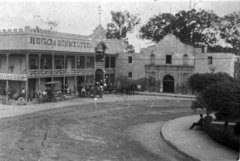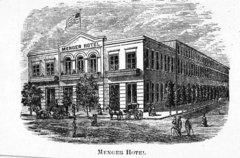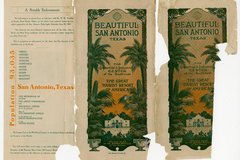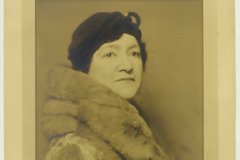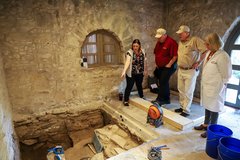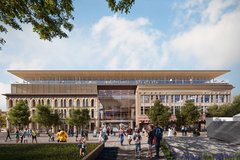The presence of the U.S. Army in the center of San Antonio had a profound effect on the development of Alamo Plaza as we know it today. Movements of goods in and out of the U.S. Quartermaster Depot had boosted the area’s commercial development, with supporting businesses and dwellings growing up along its edges.
By 1861, Alamo Plaza was already the site for a Market House, when the City Council made amendments to the regulations surrounding the market houses in San Antonio. Further early depictions and records indicate that the Plaza contained a flurry of activities, from the constant traffic of horse and wagons transporting goods to the tables set up by the Chili Queens to sell their chili to hungry patrons.
The only structures that remained of the old mission and fort compound by 1877 were the Church and Long Barrack.

